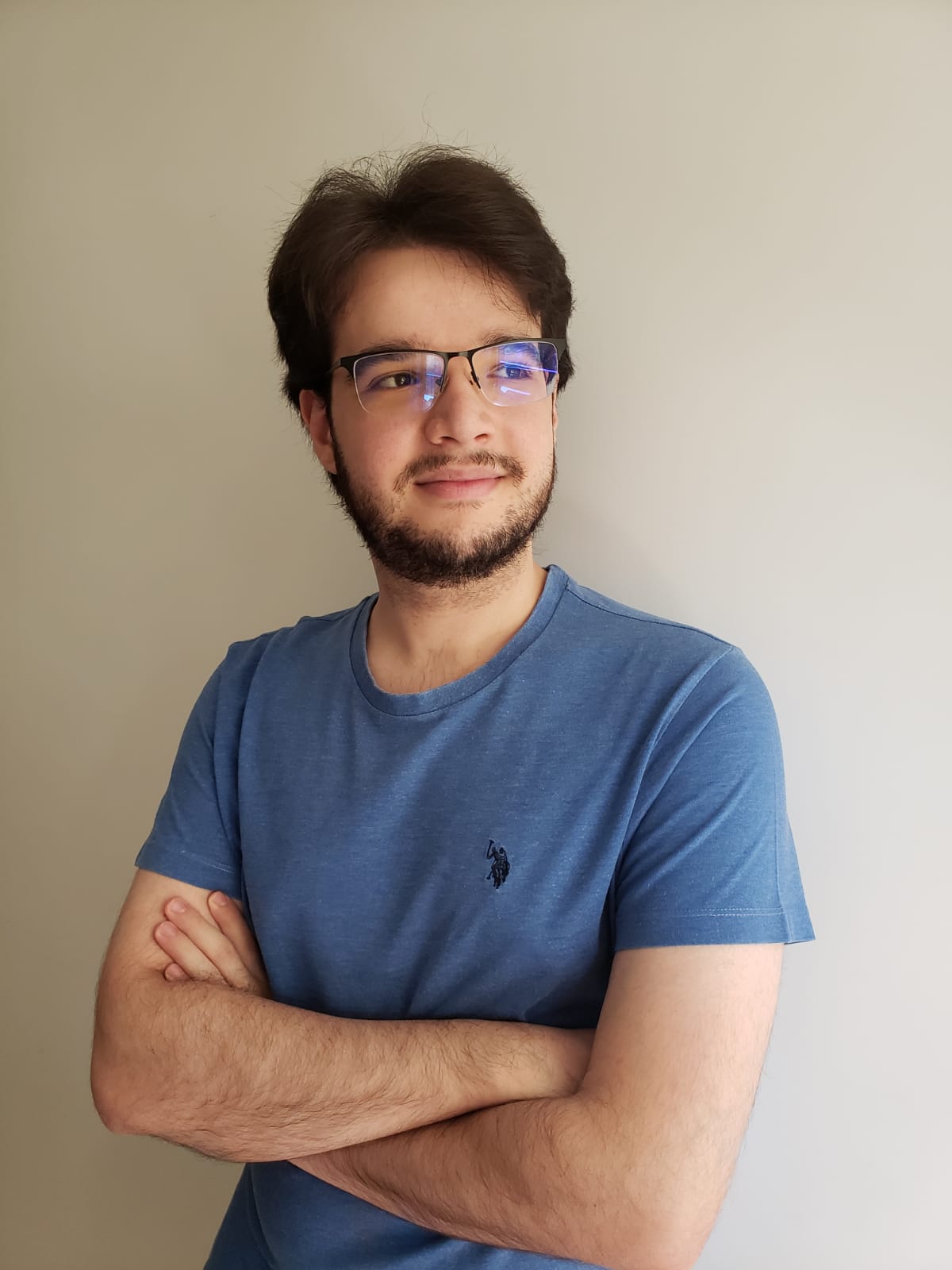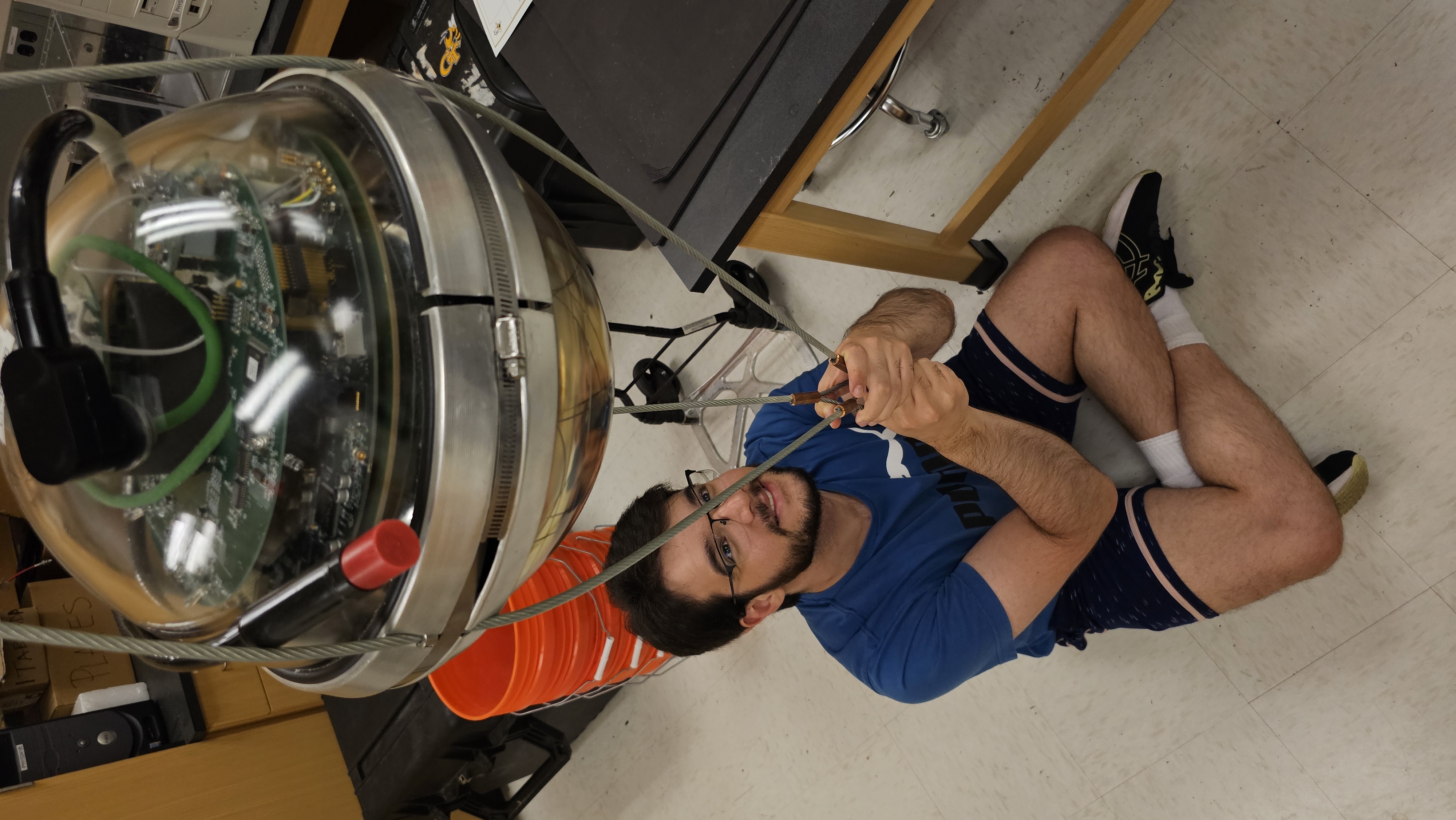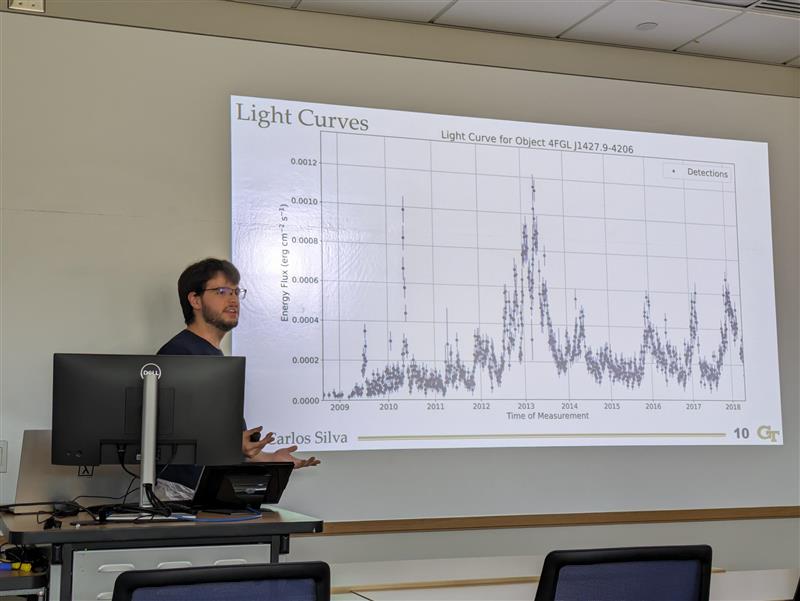Carlos Márcio de Oliveira e Silva Filho is a fourth-year Physics and Mathematics major studying Particle Astrophysics with Dr. Ignacio Taboada.

How long have you been an undergraduate researcher at Georgia Tech?
I have worked as an undergraduate researcher at Georgia Tech since my second semester as a freshman. In my first semester, I took a class where Dr. Matthew Golden was a Teaching Assistant. I learned about Dr. Golden's research during our office hour conversations, and by the end of the semester, he invited me to join his research team.
A similar situation led me to join Professor Taboada's group. After taking two of his courses—Honors Physics I and Data Science for Physicists—he noticed my potential as a physicist and proficiency as a coder. Professor Taboada usually doesn't accept undergraduate students, but he was willing to make an exception for me due to my skills and dedication.
How did you get involved with undergraduate research?
My experience of getting involved in undergraduate research as a Physics and Mathematics major involves three steps: finding a topic to research, identifying a professor working on that topic, and persuading the professor to accept you into their research group. The first two steps are relatively simple. However, demonstrating that you can contribute to a research group may require time and effort. If you have previous research experience listed on your resume, you can present this alongside recommendations. When I began at Georgia Tech, I lacked both research experience and recommendations. Therefore, my only opportunity to prove my capability was to enroll in and excel in a professor's class. So far, this approach has been successful for me.

What are you working on?
Our current understanding of the universe divides it into 17 elementary particles. You can think of these as 17 LEGO building blocks, each unique and indivisible, that can be used to build everything we know: light, energy, mass, etc.
Our research group studies a class of three of these particles called neutrinos. Neutrinos are like ghosts, passing straight through matter, making them particularly hard to observe. For perspective, at this moment, billions of neutrinos are passing through your thumbnail every second. Yet, we expect only a single neutrino to interact with your body in your entire lifetime!
To observe these neutrinos, the IceCube Collaboration, which I'm a part of, operates the world's largest neutrino telescope, which consists of over five thousand detectors spanning one cubic kilometer of ice in the south pole. Among other things, our group is concerned about discovering what sources outside our galaxy produce the neutrinos we see. My specific contribution studies a class of Black Holes called Blazars. Blazars are supermassive black holes, thousands to millions of times more massive than our sun; they live in the heart of galaxies and produce powerful jets of energy and matter that point in Earth's direction.

What is your favorite thing about research/researching?
I find something extraordinary in understanding the inner workings of the universe. The cosmos holds more "magic" than even the most creative artists could dream of. Research places you on the front line of exploring the unknown. Discovering something new, an objective truth about our universe that no other human being has known before is an unparalleled experience that fills me with a sense of joy unlike anything else I've experienced.
What are your future plans and how has research influenced them?
Participating in research has shown me how much I enjoy doing science. As a result, it has become clear to me that the next step for me is to attend graduate school. This way, I can continue to discover, learn, and make a living out of it. However, the specific details of this plan are best left to unfold in due time. Part of what makes life beautiful is its unpredictability. Similar to a book, knowing the end beforehand might spoil the journey.
